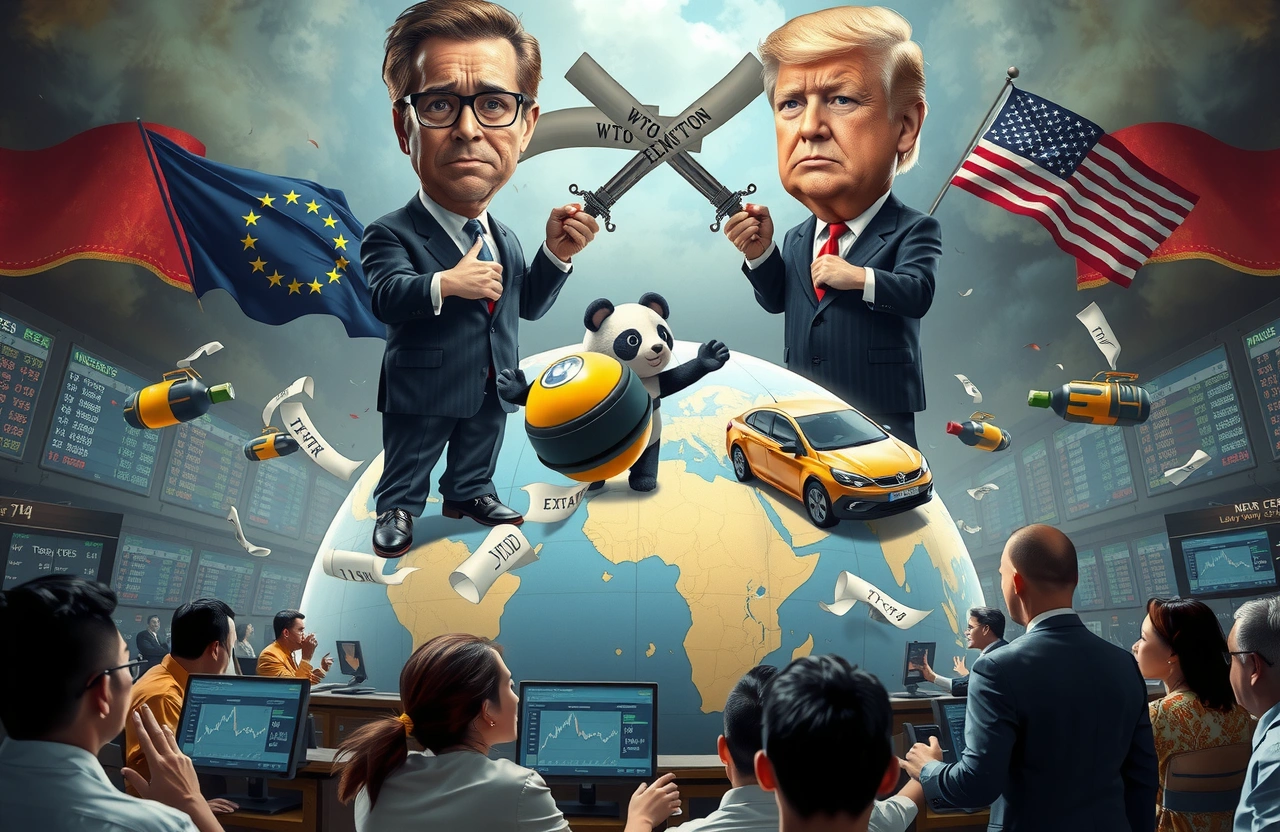Market Turmoil Following Unexpected Tariff Escalation
European Union officials raced to coordinate an emergency diplomatic response today after former president Donald Trump unexpectedly threatened blanket 30% tariffs on EU goods effective August 1. According to Bloomberg sources, EU trade representatives initiated urgent talks with Canada, Japan, and Mexico to develop synchronized countermeasures. The surprise announcement triggered immediate market panic, with European equities falling sharply at opening bell – Germany’s DAX fell 0.7% while Italy’s FTSE MIB dropped 1.1%. US markets mirrored the plunge with Dow Jones Industrial Average losing 195 points within the first trading hour.
Strategic Response Preparation Underway
EU Retaliation Framework
European Commission President Ursula von der Leyen (冯德莱恩) confirmed Brussels was preparing what officials term “the nuclear option” – a retaliatory package targeting $245 billion in American exports. The EU has additionally drafted secondary countermeasures covering $720 billion in trade, alongside technology export controls. Key elements include:
- Aircraft engine tariff surcharges targeting Boeing supply chains
- Agricultural sanctions focusing on Midwest farming states
- Digital service taxes on major US tech platforms
Leadership Responses
French President Emmanuel Macron (马克龙) condemned the tariff threats as “economic vandalism” during an emergency Élysée Palace briefing, pledging coordinated EU retaliation utilizing newly created anti-coercion mechanisms. Meanwhile, German Chancellor Friedrich Merz (默茨) warned auto sector impacts would deliver “structural damage” to Europe’s largest economy. Finance Minister Lars Klingbeil (拉尔斯·克林贝尔) emphasized Berlin’s position: “We remain committed to solutions-oriented talks but will deploy decisive countermeasures to protect European jobs.”
Core Disputes Driving Tariff Negotiations Crisis
Officials familiar with stalled negotiations identified unresolved automotive and agricultural disputes as primary destabilizers. US demands reportedly include:
- 10% baseline tariffs on all EU industrial exports
- 17% agricultural import taxes targeting French wines & Italian cheeses
- Quota restrictions circumventing existing steel/aluminum tariffs
Critical exemptions remain unaddressed according to negotiation documents reviewed by Financial Times – particularly on pharmaceutical products and semiconductor components constituting 37% of transatlantic trade.
Global Repercussions Beyond EU-US Relations
Emerging Market Responses
Brazil accelerated countermeasure consideration following Trump’s parallel tariff announcement against South American exports. Vice President Geraldo Alckmin confirmed plans for WTO litigation alongside domestic counter-tariffs targeting US manufacturing exports.
Economic Impact Projections
Goldman Sachs analysts calculated potential consequences:
- Combined tariff burden reaching 26% on EU goods
- 1.2% eurozone GDP contraction by 2026
- US core inflation spike above 4.5%
Huatai Securities researchers additionally warned secondary effects: “Unlike previous tariffs targeting industrial inputs, these consumer-focused penalties create stronger inflationary perception among American households.”
Strategic Pathways Forward
Industry executives expressed cautious optimism regarding negotiations preventing worst-case scenarios. German Automobile Industry Association President Hildegard Müller indicated ongoing high-level dialogues: “We understand negotiators still seek compromise on key exemptions before August deadline.” Brussels maintains its calibrated escalation strategy contains voluntary postponement of auto-specific tariffs until September.
Essential Actions for Stakeholders
Corporate finance departments should immediately evaluate contingency preparations:
- Identify supply chain vulnerabilities to agricultural/automotive tariffs
- Model inflationary impacts on consumer pricing thresholds
- Develop strategic inventory buffers for critical components
- Monitor real-time State Department tariff negotiation updates
Market volatility presents both portfolio risks and tactical opportunities. Institutional investors should increase hedges while positioning for value corrections in oversold European industrials and US consumer staples. Individual investors must consult fiduciaries regarding defensive repositioning given continued unpredictability in trade policy.



